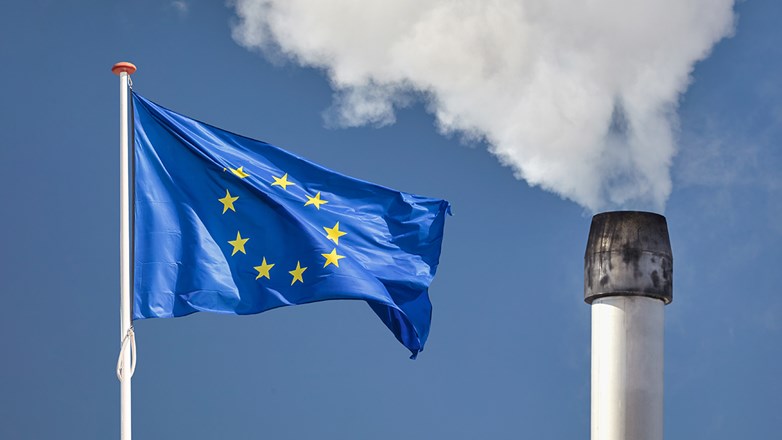Environmental enforcement in the EU: Insights from administrative cases in the US
In March 2023, the European Parliament’s legal affairs committee voted unanimously in favor of a proposed update to the EU Directive on environmental crimes (Directive 2008/99/EC). The update seeks to step up enforcement of environmental legislation across Members States through criminal law aimed at severely punishing very serious environmental offenses. We argue that, while laudable in its goal of strengthening enforcement of environmental regulation at the EU level, the current effort might be insufficient since moderately serious offenses might remain largely unpunished.
To address this shortcoming, we propose harmonizing administrative law as well. We consider additional benefits from relying on administrative law in terms of flexibility of punishment design, based on the US experience of using environmentally beneficial projects performed in affected areas as a form of punishment in administrative environmental settlements. We discuss evidence on the merits and potential limitations of the US approach based on Campa and Muehlenbachs (2022) and conclude that such an approach is worth considering in the EU context.
While the EU has set aggressive pollution reduction targets across its Member States (European Commission, 2021a), for example pledging to reduce deaths due to particulate matters to 55 percent of 2005 levels by 2030 (European Commission, 2023a), much work remains to be done. As documented in Lehne (2021), in 2020 all countries in Europe reported PM2.5 concentrations above the World Health Organization (WHO) guideline of 5mg/m3. Six countries, including three EU Member States (Italy, Croatia, and Poland) reported levels above the EU’s annual limit value of 25mg/m3. Further, Bulgaria, Poland, Portugal, Croatia, and Romania did not meet national targets for PM2.5 reduction (European Environment Agency, 2023). Main contributors to PM2.5 pollution are transportation and industrial activity, including energy production. High concentrations of these particles are known to increase physical and mental health risks (Persico, 2022; Persico et al., 2016), and risk of premature deaths (Fuller et al., 2022).
Environmental concerns across EU Member States are also not limited to air pollution. Across the EU, 28 percent of groundwater sources are affected by pollution from agriculture, 14 percent from industrial contamination, and 7.5 percent from mining waste (Kampa et al., 2021). The persistent pollution problems in the EU and their unequal distribution across regions despite growing EU-level environmental legislation underscores the importance of law enforcement. While all EU Member States are theoretically subject to the same overarching environmental standards and regulations, the enforcement of environmental laws differs widely across countries. To address this issue, the EU Commission (henceforth EC) has recently taken steps to further harmonize environmental enforcement across EU Member States.
In this brief we consider the EC’s proposal and argue that, while commendable in the goal of strengthening enforcement of environmental regulation at the EU level, it is also quite limited in terms of enforcement tools that it considers. Specifically, we discuss potential advantages of leveraging administrative law tools to enforce environmental regulation, whereas the EC approach is currently focused on criminal law. We consider the higher probability of prosecution and the enhanced flexibility in the type of penalties allowed by administrative enforcement actions. Finally, we discuss results from Campa and Muehlenbachs (2022), which studies the use of administrative penalties for environmental violations in the US and draws some lessons for environmental enforcement in other jurisdictions.
Strengthening environmental enforcement at the EU level
While environmental regulation is a shared competence of the EU, enforcement has historically been left to national environmental authorities (European Parliament, 2016). In the face of a lack of institutional capacity at the national level, a result of this arrangement are generally low levels of environmental enforcement, widely heterogeneous across Member States (Mazur, 2011). EU institutions have tried unsuccessfully over time to address this challenge and harmonize enforcement across EU Member States. An early attempt was made in 2001, when the EU put in place minimum standards for environmental inspections that Member States carry out, though these were only non-binding guidelines, and Member States could not be sanctioned for flouting them (European Parliament, 2001). Mandatory standards were then introduced in 2008, with the EU Directive on environmental crimes (Directive 2008/99/EC), which forced national governments to apply criminal sanctions to those causing “substantial damage” to the environment. However, it has typically been difficult for the EC to sanction non-abiding Member States. Moreover, the obligation is limited to areas where the EU has competence and does not include minimum penalties.
In another attempt to step up their enforcement efforts, in 2016 the EC began publishing the annual Environmental Implementation Review, where each country is evaluated on its environmental affairs and enforcement (European Commission, 2023b). Although this does not improve the EC’s ability to efficiently sanction Member States, it does increase scrutiny and visibility. In 2021, the EC tabled a proposal to update the 2008 Directive on environmental crimes (European Commission, 2021b). The proposal acknowledged the insufficient number of environmental criminal cases successfully investigated and prosecuted as well as the large discrepancies in the transposition of the 2008 Directive across Member States. Against this background, the EC proposed to enlarge the scope of the 2008 Directive, establish minimum penalties, foster cross-border investigation and prosecution, and promote data collection and dissemination on criminal enforcement actions. In March 2023, the European Parliament’s legal affairs committee voted in support of the EC proposal, extending the list of offenses that would be criminally charged and increasing the size of the minimum penalties.
Environmental enforcement, administrative law and “in-kind” punishment
The efforts of EU institutions to improve and harmonize enforcement are exclusively focused on criminal law instruments. The EC’s 2021 proposal specifically links poor enforcement in Member States to their reliance on administrative law, which limits fines and thus allegedly reduces the deterrence value of enforcement actions. Indeed, sufficiently high fines are considered crucial to deter future violations (see, e.g., Aguzzoni et al., 2013). However, we argue that reliance on administrative law also has some advantages. In particular, we consider two potential benefits of administrative law based on existing studies, namely higher probability of case initiation and more flexibility in terms of penalty design.
Probability of case initiation
One of the shortcomings of the current enforcement framework highlighted by the EC is the very low number of environmental criminal cases that are ultimately prosecuted. Research on enforcement tends to link the low frequency of observed criminal cases to the high cost of criminal proceedings, especially relative to more informal administrative procedures (Faure and Svatikova, 2012). The cost dimension is especially relevant for cases that are moderately serious, but that nevertheless in aggregate contribute significantly to environmental degradation. The probability of catching violations is also relevant, together with the size of the penalty. A very large penalty for a criminal case that is highly unlikely to be prosecuted might be less deterring than a moderate penalty associated with very high probability of prosecution.
“In-kind” penalties
Federal environmental regulations in the US are enforced through a combination of administrative and criminal law. The Environmental Protection Agency (EPA) initiates administrative cases or refers them to the Department of Justice when the gravity of the violation is large. Administrative cases result in settlements where the defendant can be ordered to pay a fine, which can vary from a few thousand to a few million dollars and which is determined according to various factors, such as the magnitude of environmental harm, the firm’s economic gain from violation, its violation history, and its ability to pay. Additionally, when a fine is established, defendants are given the opportunity to volunteer to pay for an environmentally beneficial project in the affected area. The EPA encourages these projects especially in areas subject to environmental justice concerns, namely those characterized by a large share of minority and low-income households.
Campa and Muehlenbachs (2022) study the implications of using these projects in environmental enforcement cases in the US. The study reveals a large preference among the public for this “in-kind” form of penalty versus traditional fines, based on a survey of US residents. Moreover, a randomized survey experiment reveals that these environmental projects elevate the profile of the firm among the public as compared to a firm that only pays a fine, even when the penalties stem from the same violation. Similarly, the stock-market response to the announcement of these projects is positive, whereas announcing a settlement with a large penalty causes a drop in the stock-market price of the defendant. In terms of implications for environmental justice, the data analysis shows that the whitest and richest communities are the most likely to receive these projects, but the second largest share goes to communities where there are highest concentrations of minorities and low-income households.
Overall, the study finds that punishing firms through environmental projects can be beneficial for political economy reasons, given the large preference for this enforcement tool among the public and likely among firms, since firms seem to benefit from undertaking the projects. Moreover, while the targeting of environmental justice communities in the US is not perfect, tweaking the US arrangement could guarantee that the projects predominantly benefit those communities most harmed by environmental violations.
For EU adoption of environmental projects enforcement, a caveat is that the perception of these projects might be different among the public in the EU. Nonetheless, large-scale surveys modelled on those presented in Campa and Muehlenbachs (2022) can help in understanding public views in different regions. Moreover, the paper emphasizes that on the one hand, by benefiting defendants, the environmental projects might ultimately be a more lenient punishment than fines, with implications for deterrence and future environmental quality. On the other hand, environmental quality might also improve as a direct effect of the projects being implemented and due to improved monitoring in affected communities (Dimitri et al., 2006). Overall, the study finds that future environmental quality might be more likely to improve following fines rather than environmental projects. However, it cautions the reader on data limitations that causes the result to not be conclusive enough and calls for further research.
Conclusion
The persistence of environmental problems in the EU, as well as the striking differences in pollution levels across EU Member States, underscores the need for more and better environmental regulation. However, even in the presence of comprehensive and strict environmental rules, the protection of the environment is still inadequate if a proper enforcement mechanism is not in place. As observed in OECD (2009), proper enforcement ensures deterrence. Successful deterrence provides the best protection for the environment, while reducing the resources necessary to administer laws by addressing non-compliance before it occurs. EU institutions have recently taken important steps to improve and further harmonize enforcement of environmental regulation across Member States, with proposed updates to the existing Directive on the matter scheduled for Member-State discussion in upcoming months.
Specifically, the EU is seeking to step up the use of criminal law to prosecute environmental offenses across Member States, with mandatory penalties and increased cross-border coordination. We argue that the focus on criminal law has some drawbacks, which could be addressed by also harmonizing administrative enforcement across EU Member States. Researchers have previously argued that reliance on administrative law might increase the likelihood that offenses are investigated and prosecuted. We also present evidence from the use of administrative law in the US, where defendants in environmental cases can settle to pay part of their penalty “in-kind”, i.e. by performing environmental projects in areas affected by the alleged violations. The evidence suggests that the use of these projects is worth considering in other jurisdictions, including the EU, because they might be preferred by the public and could help addressing environmental justice concerns. An important caveat is that their implications for environmental protection are not clear, and more research should address this important aspect. On the subject, the existing evidence on environmental enforcement in the US, such as that presented in Campa and Muehlenbachs (2022), is established thanks to the availability of rich data sources kept by the US’ EPA. The EC’s recent proposal to systematically collect and disseminate data on environmental crimes is thus particularly welcome and should not be overlooked in the upcoming negotiations with Member States on the final content of the proposed Directive.
Authors
Pamela Campa, Associate Professor, SITE
Giulian Etingin-Frati, MSc Economics student, SSE
References
Disclaimer: Opinions expressed in events, policy briefs, working papers and other publications are those of the authors and/or speakers; they do not necessarily reflect those of SITE, the FREE Network and its research institutes.
Photo: Martin Bergsma /Shutterstock




